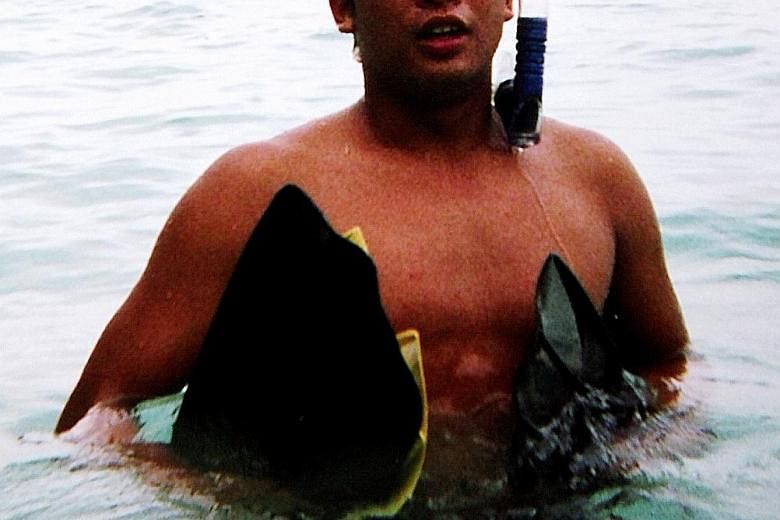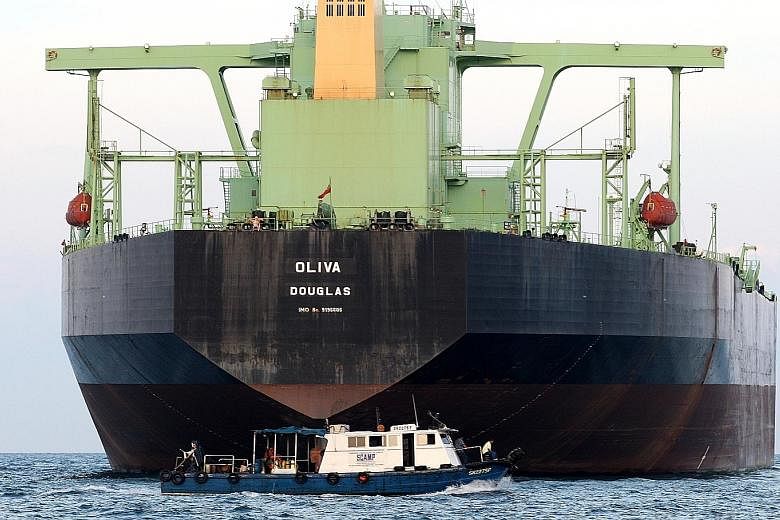When a sudden storm lashed at his speedboat about 500m from Tioman Island on May 4, Mr John Low had to jump into choppy waters or go down with his boat.
Despite having no water or food for four days, the 60-year-old former diving instructor survived his ordeal. Many more have not been so lucky.
The Maritime and Port Authority of Singapore (MPA) refers to cases such as Mr Low's as a "persons at sea" incident. Since 2014, the authority has coordinated a total of 92 search and rescue operations for ships and people at sea.
In some cases, the operations were carried out as a result of vessels capsizing after a collision, but there have also been "man overboard" cases and diving accidents.
In September 2008, commercial diver Mohammed Borhan Jamal, who was underwater repairing a ship at the Eastern Petroleum A Anchorage near Bedok, was swept away by a sudden undercurrent.
Rescuers from the Police Coast Guard and MPA combed the area and also alerted their counterparts in Malaysia and Indonesia to keep a lookout for the 26-year-old, concerned that he may have been swept into coastal waters off Johor or Batam. His body was washed ashore in Batam 12 days later.
Media reports since 2007 showed that at least 18 Singaporeans - from recreational divers and ship repairers to members of Singapore's dragon boat team - were claimed by the sea in the region. In most instances, sudden changes in currents and weather had contributed to the incidents.
Diving instructor Jason Ng and his five students were enjoying a night dive on Renggis Island near Tioman in Malaysia in 2014 when a strong current pulled them away from where their boat was anchored. But they did not panic.
Mr Ng, the course director of dive operator The Dive Ship, said: "If we had stayed in the current, we would have drifted farther away from the boat. And since it was dark, the captain may not have been able to spot us."
They swam deeper into the water instead of going directly against the current as it would have taken more energy and oxygen.
"Swimming perpendicular to the current is not natural to many because, instinctively, people will swim against the current and try to fight it, exhausting themselves and depleting their air supply, which is dangerous," said Mr Ng, 29.
Although the incident lasted just a few minutes, and they were fortunate to be able to see their boat when they resurfaced, it showed them how quickly the situation can change. They decided to call off their one-hour dive and return to shore.
Diving instructor George Low said that because the weather can change suddenly, it is important to be armed with as many tools as possible.
For example, he learnt how to use pressure charts and weather maps to identify diving sites with good weather on a particular day. He also factors in local conditions, for example, when he dives in the Philippines.
The 33-year-old co-founder of dive operator Scuba Knights said: "Since typhoons are common in the Philippines, the locals tend to use weather maps because those tools are more accurate.
"I'm able to make better decisions about where to go by analysing the pressure charts."
Instructors have an added responsibility and have to make judgment calls for the people in their care, said Mr Stephen Beng, a course director who trains diving instructors.
"If you find that one diver in a group of 10 is uncomfortable because the sea is slightly choppy although the weather is good, you should move to a more sheltered spot so that everyone feels safe," said the 49-year-old, who was president of the Singapore Underwater Federation from 2006 to 2010.
Divers and instructors should also keep a close watch on the weather and tides, and ask local divers about dangerous spots, risks and current patterns as they are most familiar with their waters, he added.
BOATS INSPECTED
Captain Sahwan Osman, a senior lecturer at the Singapore Maritime Academy, said boats and vessels registered in Singapore undergo rigorous maritime registration and licensing processes by MPA, in order to be deemed seaworthy.
Fishing boats, for instance, will have annual inspections.
But even the best-maintained vessels can struggle in bad weather. Mr Sahwan said vessels must be careful during monsoon periods and when Sumatra squalls pass over Singapore waters.
During the north-east monsoon, which lasts from December to March, winds will cause the sea to be choppy while swells and surges, sometimes rising up to 3m high, will travel from the South China Sea to the Singapore Strait. He warned that Sumatra squalls will also bring strong winds from the Strait of Malacca to the South China Sea.
"The swells may hit boats from the side, causing the vessel to roll with the large waves and sometimes capsize," said Mr Sahwan.
During the monsoon season in December 2017, a fishing boat with two Malaysians capsized near Pedra Branca. The two men drowned.
Even with the best-laid plans, things can go wrong, said Mr Beng. The best thing to do is stay calm.
As Mr John Low's boat was going under, he had the presence of mind to grab a ring buoy and, as he floated in open waters, he spoke to it to keep sane.
Said Mr Beng: "When we hit the waters, we need to remind ourselves that we are in an element that is not ours and we must remain alert all the time. It is when we switch off and panic that things happen."



